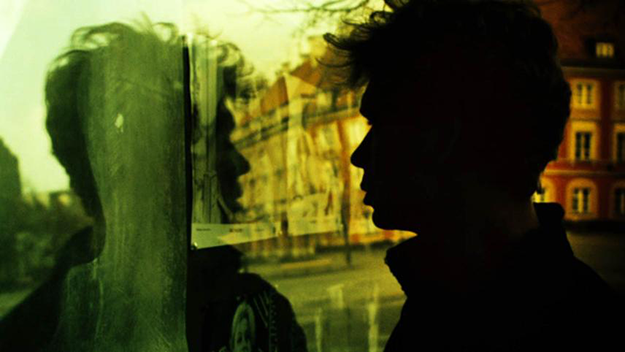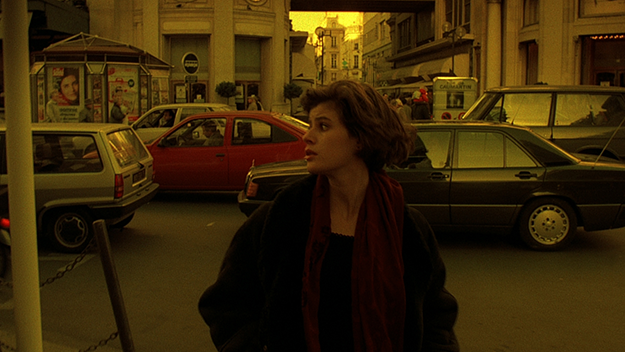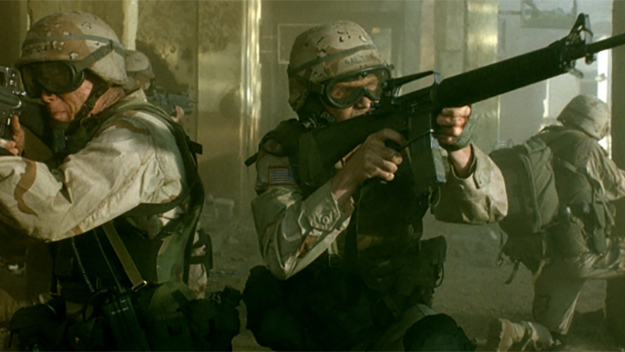Interview: Slawomir Idziak
This interview is part of a series with influential cinematographers who attended the 2016 Camerimage International Film Festival of the Art of Cinematography in Bydgoszcz, Poland, in November.
Polish cinematographer Slawomir Idziak has left an indelible mark on modern cinema with his work on Krzysztof Kieślowski’s metaphysically charged, atmospheric films. The two men’s collaboration, which began with A Short Film About Killing (1988), and lasted through Three Colors: Blue (1993), yielded uniquely evocative, voluptuous images that reflect the characters’ subjective experiences. In A Short Film About Killing—a haunting indictment of capital punishment imbued with a feeling of impending doom—Idziak combines stylized color and lighting with nervous handheld camerawork to depict a disenchanted youth’s descent into murder in communist Warsaw. Kieślowski’s first film in French, The Double Life of Véronique (1991), sees Idziak experiment with reflections and elaborate camera movements to convey the story’s theme of metaphysical bonding, while Blue, the first installment of the Polish director’s Three Colors trilogy—a modern-day examination of the values of the French Revolution—offers an intimate and poetic exploration of mourning and rebirth through a symbolic use of the titular color. In the late ’90s, Idziak relocated to Hollywood, where he adapted his visual sensibility and craftsmanship to American filmmaking practices.
Film Comment spoke with Idziak at the 2016 Camerimage Film Festival about his creative partnership with Kieślowski, and transitioning from Polish cinema to the Hollywood studio system.

A Short Film About Killing
I recently rewatched A Short Film About Killing [1988] and was really struck by the almost apocalyptic way in which Warsaw is depicted. The opening shots of dead animals—cockroaches, a rat, and a hanged cat—combined with the extensive use of green filters, plunge us into horror territory right away. Did this murky aesthetic emerge from the atmosphere of uncertainty and hopelessness that reigned in Poland at the time?
This was of course not a realistic vision of Warsaw. The film has an austere subject matter. It treats the death penalty as something totally inhuman and makes strong commentary about a certain judicial case, which the so-called civilized world objected to as nonsense. You know, Poland used to be behind the Iron Curtain and that was a completely different kind of reality. Of course the reality we experienced didn’t look like what you see in the film, but we were still deeply secluded. We somehow lived behind a glass window and watched the so-called reality of people who spent their lives in a completely different system and environment. I believe that a certain amount of exaggeration is necessary to depict this. That story is, once again, a graphic representation of something that doesn’t exist. So I decided to use a very strong visual language to reflect that. But it’s a little bit ridiculous, because this film is one of the 10 installments in the Dekalog series but somehow stands out in the crowd. In the end, I believe that was a good thing because it helped with promoting the others. You know, Kieslowski didn’t shoot the films in order. We started with number 5, which is A Short Film About Killing. The next year, it was ready for the Cannes Film Festival [where the extended version screened], but the other films were not. So being invited to Cannes was very good promotion for the rest of the series.
You talked about looking at reality behind a window, and as a cinematographer, you actually seem to have an obsession with optical effects and reflective surfaces. Some visuals that come to mind are the glass sphere in Weronika’s hand that reflects the landscape outside the train in The Double Life of Véronique, or the sex scene at the end of Three Colors: Blue, filmed behind a fishbowl and highlighting Julie’s blooming sensuality. Did you and Kieslowski envision these types of shots as representations of the characters’ inner worlds?
These are two different examples. In terms of the reflections in The Double Life of Véronique, it’s somehow much simpler than that, I would say a simplistic metaphor of existing in a fairy tale—we are dealing with something that’s unreal.
Perhaps also a metaphor of the fragmentation or duplication of identity.
Reflections felt like a natural way to represent this; it was an instinct to do it that way. The film overall had a very metaphoric quality and aimed to connect the audience with the characters’ way of thinking and highlight the kind of metaphysical link that these two ladies have—what affects one life somehow affects the other.
In terms of Blue, Kieslowski gave me three scripts before he started working on Three Colors, and asked me which one I would like to shoot. I instinctively chose Blue. But there is another reason: because Blue was the first installment of the trilogy to be shot. And remembering how Kieslowski was at the end of Dekalog—I had met him when he was about to finish it and was extremely tired—I was a little bit afraid to deal with a drained director, so I didn’t want to make White or the last one, Red. I was worried that it wouldn’t be a good collaboration, but instead a stressful situation that could lead to misunderstandings. So that was the first reason behind my decision to shoot Blue.
But very quickly I realized that the danger was different and that with Blue we were dealing with a story that was very similar to The Double Life of Véronique. The music played a very strong role in both films. And so Kieslowski and I were afraid that somehow we would copy our number from The Double Life of Véronique. You know, you often do such things instinctively, especially when you’re working under the pressure of time. So in Blue, we were desperately trying to find things that would be the opposite of what we had done in The Double Life of Véronique.
To be honest, the style of the movie came about by coincidence. I remember that at the beginning of the film, when the journalist visits Julie [Juliette Binoche] and asks her about her husband, she’s attacked by the music and a blue light pops up. This effect was achieved totally by accident, meaning that I had something in mind but my plan didn’t work. It was a Saturday and the amount of light was too weak to achieve a decent effect. So I placed the negative on the plate and had the blue gels on the camera, then I opened the plate door and it happened by miracle honestly. And the first edit of the movie was really bad…

The Double Life of Véronique
Bad from a structural standpoint?
No, it was a question of genre. The script was written as a psychological drama, almost a detective story. The journalist was the third most important character and she appeared three or four times in the script, but now she’s only in there once at the beginning. Kieslowski completely cut her out. So the script somehow turned during this final edit from a psychological drama into a more operatic, musically driven kind of film. And it works, you know… In the edit, Kieslowski repeated this number with the blue light several times. So in the middle of one scene, for instance, he fades to black and then the music comes in, followed by the blue light. And this was the beginning of an idea that turned everything upside down—suddenly the film was completely different; it was attractive and it still worked nicely. Kieslowski was a genius in terms of editing. I never met a director who is as good an editor as he was. He was good because he had spent millions of hours editing documentaries in the past. And that was real physical, manual work. He liked to cut everything himself. Editing was a completely different process back then; it was very mechanical because you had to splice together image and sound. But Kieslowski needed half the time a professional editor needed to do a cut. He was very fast, like a magician. He knew how to experiment and shift things around very quickly.
Your work with Kieslowski is based on a visual exploration of people’s inner lives—it’s an emotionally vibrant, highly impressionistic kind of cinematography. In this regard, it’s interesting to compare those films with the ones you shot in Hollywood. For instance in a film like Gattaca [1997], the evocative visual language of Kieslowski’s films is replaced by a detached, almost frozen aesthetic: the camera is outside, never inside the characters. How did you navigate that stylistic transition?
First of all, it was a completely different kind of collaboration, as you can imagine. That’s a very typical genre movie. My opinion is that it’s not a great movie—I don’t believe it’s a bad movie, but it’s far from being something great. In Poland, we used to collaborate very closely with the director starting from the script stage. As a cinematographer, you were obliged to work on the script. And automatically this collaboration resulted, not only in the shooting script but quite often in a new version of the script. So it’s absolutely impossible to do such a thing in the studio system. I still have quite a good relationship with Andrew Niccol [the director of Gattaca], and I believe the film is better than what it’s supposed to be. Because it’s Hollywood, you know. Films are done differently than in Poland—you have studio heads, producers, and so on, who control different stages of the production. And that’s not always positive, especially when you’re doing something that’s a bit unusual. When you’re making something that’s not so clearly defined as a style, a genre, it’s hard to achieve what you want.
The camerawork in a film like Black Hawk Down [2001] seems to be primarily focused on generating shots from as many angles as possible for cutting purposes. When you were working with 15 cameras and directing as many camera operators, did you ever feel like you were looking at the world from the point of view of gods rather than that of humanity?
This is, again, a completely different example. Ridley Scott is a very visual director, and is famous for coming up with his own storyboards. So my job was mostly to figure out where to put the other cameras. I always got a storyboard for the first camera, and I needed to stick to what I was asked to do. Ridley is very much like a kid—he likes to play with the toys of filmmaking. A very characteristic answer I got from him when presenting him my ideas—though of course he sometimes bought them—was: “Oh, this is a very good idea. But you know, I prefer mine.” So this is the way he would work.
My job is to adjust. I have to understand what kind of partner I’m working with, because filmmaking is a kind of ping-pong and I have to play accordingly. These three examples—Kieslowski, Andrew Niccol, and Ridley Scott—have completely different worlds, and it’s very hard to compare them.

Black Hawk Down
Were you present during the post-production of Black Hawk Down?
No. Nowadays that’s a big deal, because what we are doing as cinematographers is only half of the product. The second half is being done in post-production, and we don’t have authorship of our work. What you’re dealing with in those cases is group authorship, and that’s a bad aspect of the way things are being done today. I hope that will change. The technique is still complicated, but I believe the tools will get much simpler very soon. It’s like a circle, you know. If we began with Technicolor, we are now at the end of the mega period. We’ve had a lot of freedom in recent years because it was finally so easy to achieve whatever we wanted. And today we are again at the hands of specialists, illusionists so to speak. In my case, I don’t want to work as a cinematographer anymore; I’m teaching and building things. For example, I built a cine-bus—I can show you… [He shows me a brochure.]
What is a cine-bus?
It’s a bus with a tent and you have a green screen. It’s fully equipped—you can travel to places and shoot there.
In what context did you come up with this?
I do a workshop in Krakow once a year. Three-hundred people come, it’s free of charge, and we talk about VR, dramaturgy—the future of the business.
In 2010, you shot Poland’s first 3-D film, Battle of Warsaw 1920, an epic retelling of the titular historical event. How was your experience working with that new technology?
For me, the future is important, and I like to work in new mediums. But I don’t believe that the potential of 3-D is being fully used. Today, hundreds of films are being shot in 3-D because the producers want to make more money, and somehow the side effect is that audiences are not ready to watch so many 3-D films. Only a few films being produced with this technique truly own it. If we had more directors like Tim Burton working with this technology, we would still be able to deal with it properly. But unfortunately, you have hundreds of bad examples of 3-D. So this technique is being killed. But not really killed, because you know in virtual reality, we’re back in 3-D. You can’t imagine virtual reality without 3-D; it’s an essential element of it.
I love the Camerimage festival, but there aren’t hundreds of people standing in front of the theaters like at the Berlin Film Festival. That’s a bad sign. Even other big festivals, like Cannes, aren’t completely dying, but when I was there 20 years ago, it was totally different. Nowadays, there are so many more people attending YouTube meetings, for example. If 50 million people around the world watch YouTube videos on their computers, what’s the future for cinema? How many people are still going to watch films? Studio films are still being seen of course, but we are facing the death of national film industries, like Polish or Scandinavian. In Finland, even if you sent the entire nation to the theater, you would never make the money back.
Yonca Talu is a filmmaker living in New York. She grew up in Istanbul and recently graduated from NYU Tisch.







